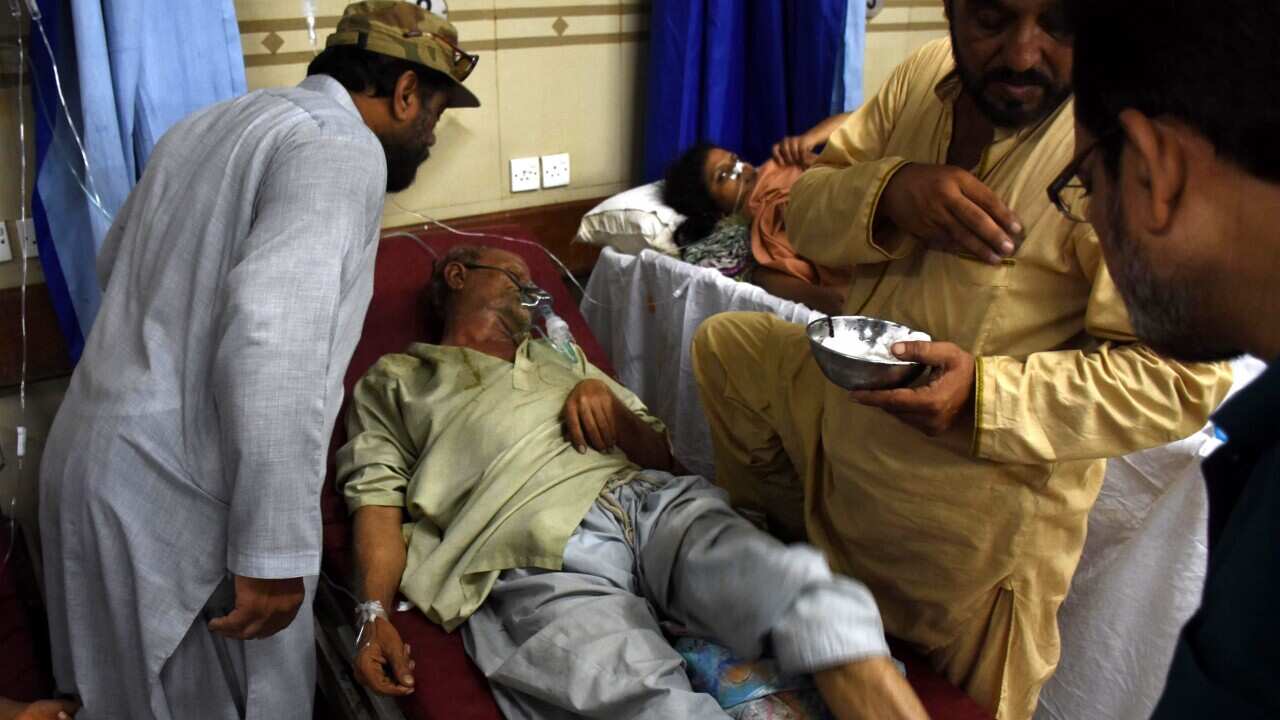News
Temperature in Pakistan Expected to Exceed 50 Degrees Celsius

According to the weather service, the maximum temperature in Pakistan is expected to exceed 50 degrees Celsius in the following days as a severe heatwave grips the country with no immediate relief in sight.
The daytime temperature reached 49 degrees Celsius on Wednesday, and the meteorological authority predicts that the heatwave will last the rest of the week.
The worst impacted region is southern Balochistan, Pakistan’s largest province by area, accounting for 42 percent of the country’s land.
Last Wednesday, the meteorological agency reported a high temperature of 49 degrees Celsius in the Nokkundi area of Balochistan.
Temperatures in portions of Punjab and Khyber Pakhtunkhwa provinces could exceed 50 degrees Celsius, according to Chief Meteorologist Sardar Sarfaraz. “However, in Balochistan, it is expected to subside slightly.”
He recommended residents in these locations to remain indoors.
“Day temperatures are likely to gradually rise in most parts of the country from June 22 to 24,” the meteorological service stated in an alert issued Monday morning.
The advisory predicts that daytime temperatures will continue four to six degrees Celsius above normal in portions of the country.
The chief of the meteorology department stated that the present heatwave might be the country’s first and last for the time being, as the monsoonal flow is scheduled to begin in July.
“Last year, we had five to six heatwaves from mid-March to mid-June, but this year appears to be the only heatwave,” he said.
Rainfall is scheduled to begin on Sunday, putting an end to the current warmth. With the projected pre-monsoon rainfall in July, the situation will improve.
Heatwaves are typical in Pakistan during the summer months before the monsoon arrives.
Many Pakistanis work beneath the burning sun in the suffocating heat.
The government has issued a warning that rising temperatures are causing glaciers in the country’s north to melt at an alarming rate.
Pakistan has over 7,000 glaciers, the most outside of the North and South Poles, making it one of the most vulnerable countries to the effects of global warming caused climate change.
Pakistan army blames India for killing two civilians
Meanwhile, Pakistan’s army reported on Saturday that two civilians were killed by Indian forces in the disputed Himalayan region of Kashmir, the first such battle between the two nuclear-armed South Asian neighbors since a truce in 2021.
The army claimed in a statement that a group of shepherds was attacked along the Line of Control, the de facto border between the two nations, and that it had the right to strike back.
“In a display of its usual inhumane approach towards innocent Kashmiris, the Indian Army opened indiscriminate fire on a group of shepherds in Sattwal Sector,” according to the statement.
An inquiry to the Indian army was not returned.
In 2021, the two parties agreed to a truce along the disputed boundary in the picturesque valley in a rare joint statement.
Both India and Pakistan claim ownership of the disputed land, but each owns half of it. Since gaining independence from British authority in 1947, the two countries have fought three wars, two of which have been fought over Kashmir.
In 2019, the two forces came dangerously close to war, scrambling jets and shooting down a warplane after Indian planes intruded into Pakistan airspace, ostensibly to target a militant training site, according to New Delhi.
The Pakistani foreign office summoned the Indian envoy to express a protest against the killings and breach of the ceasefire, according to the statement.





























